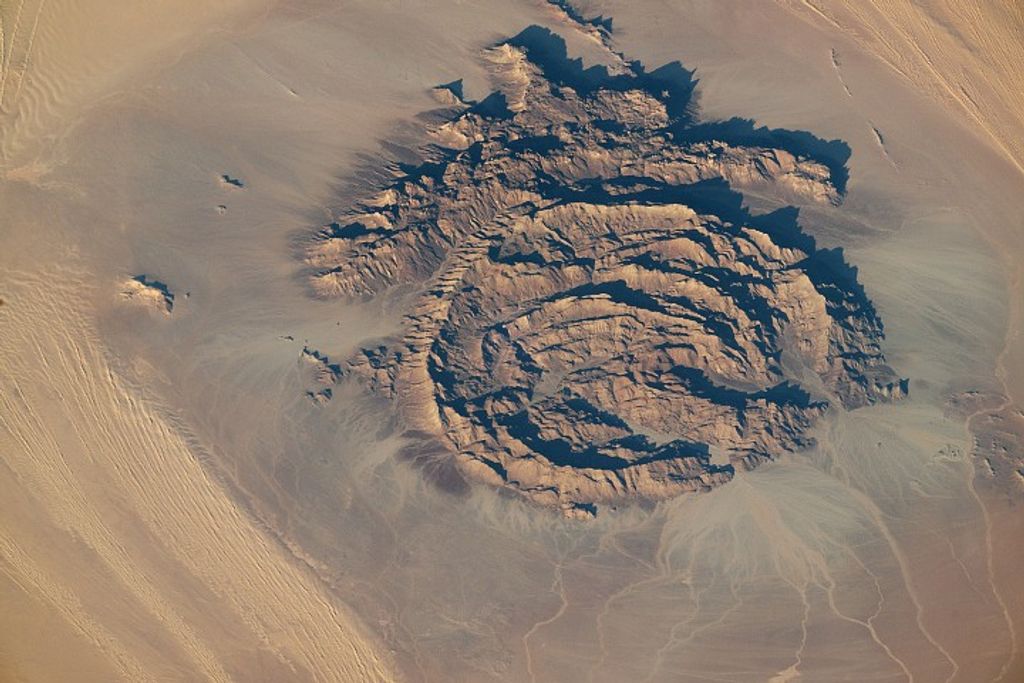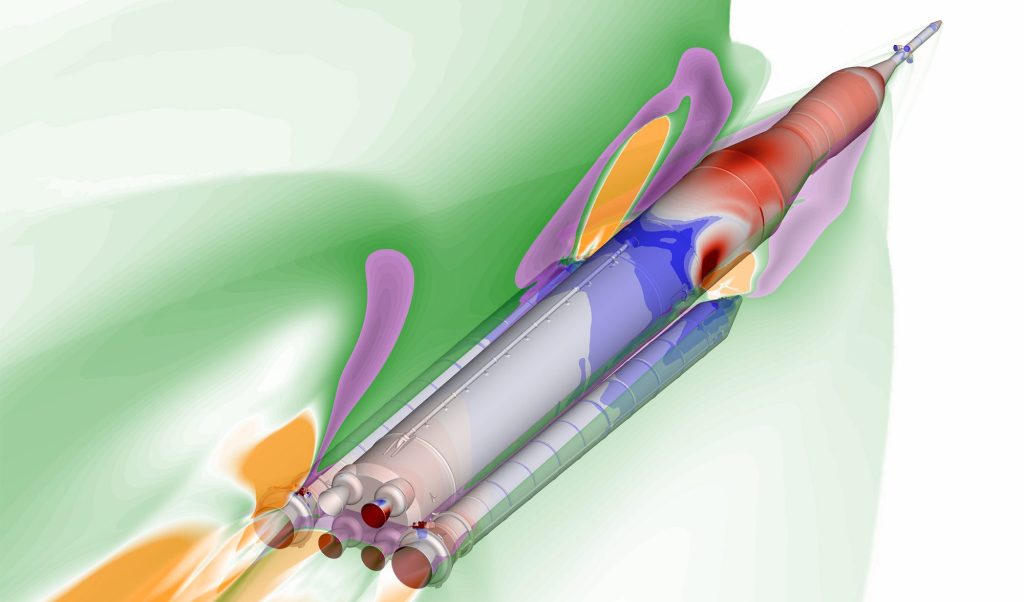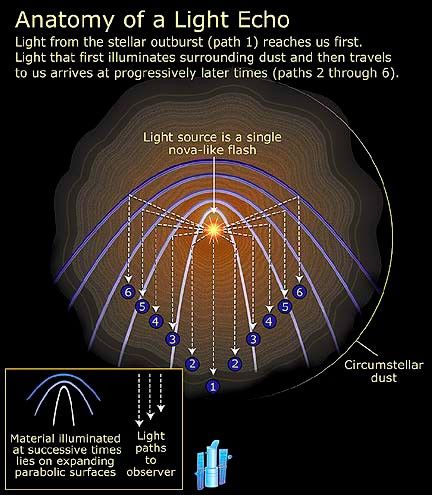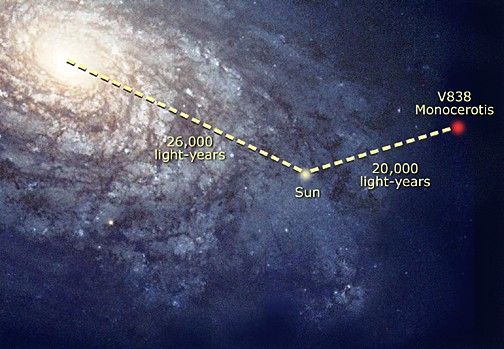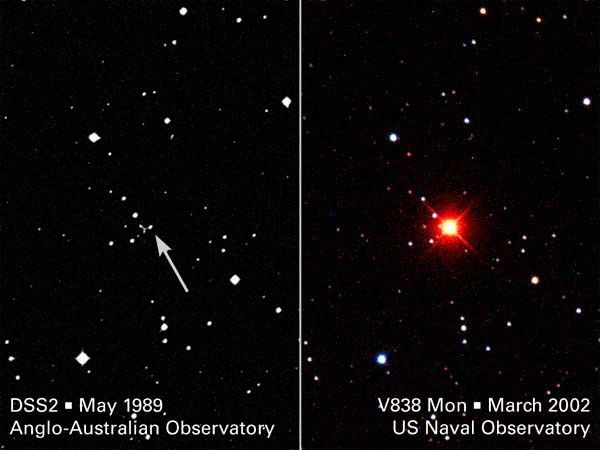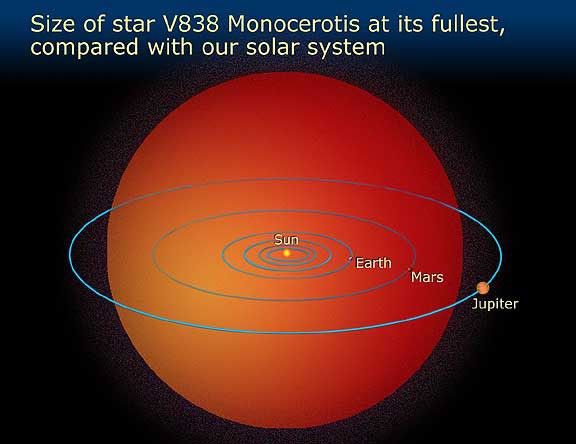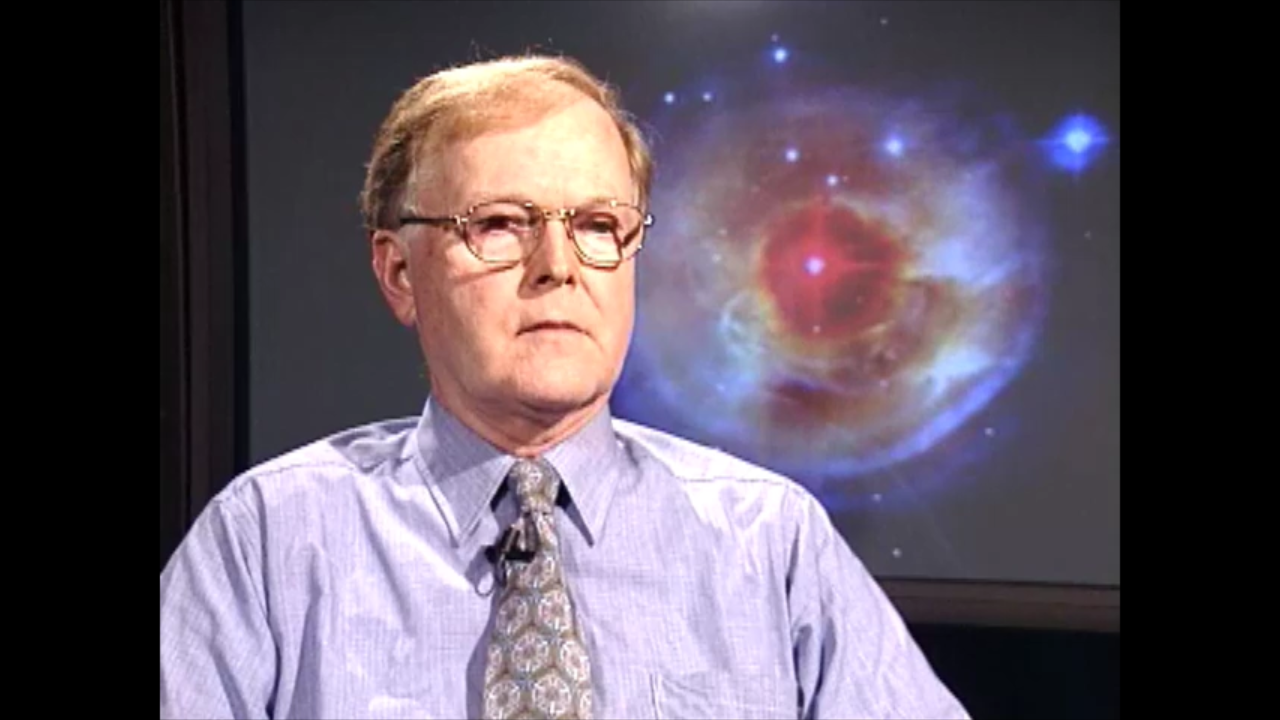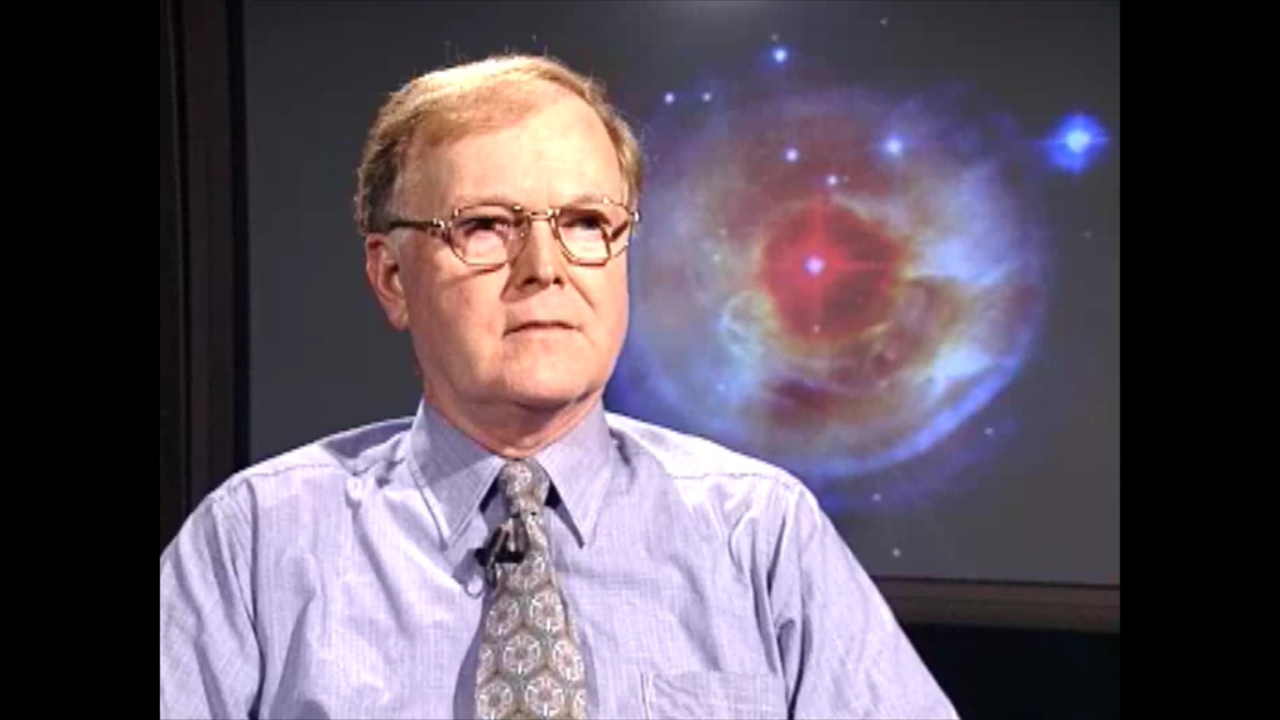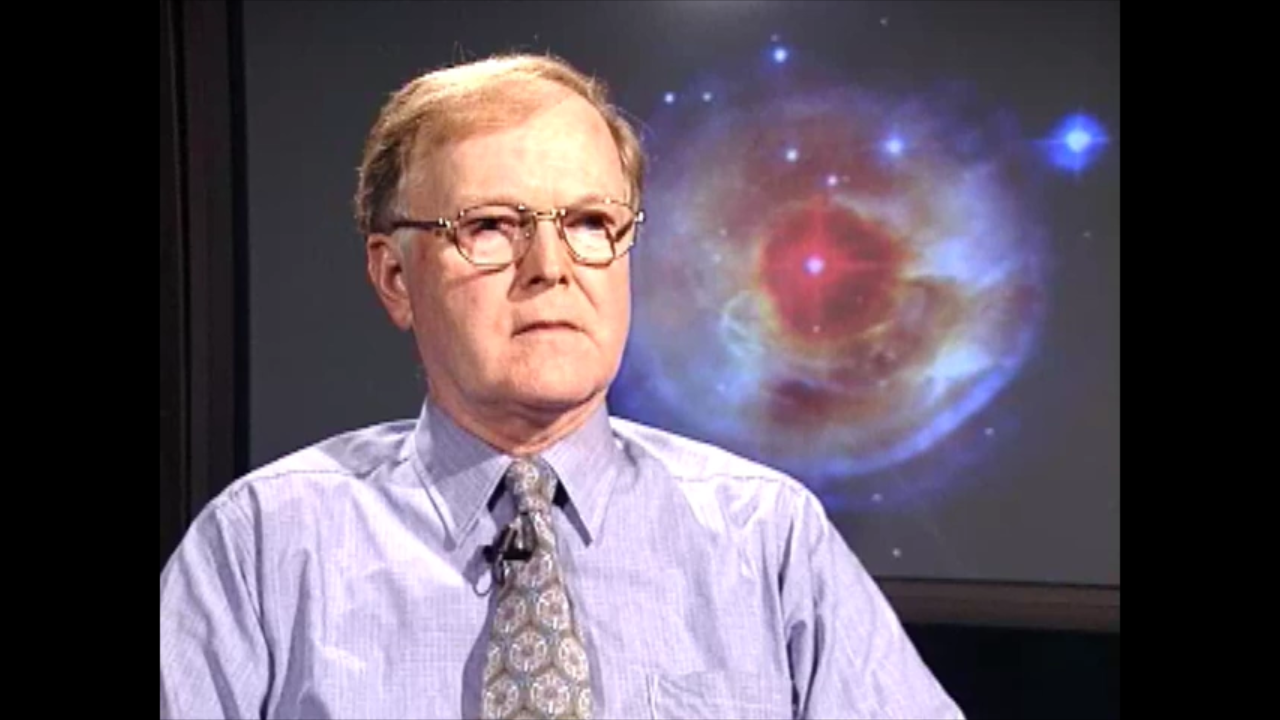1 min read
Light Echo from Star V838 Monocerotis
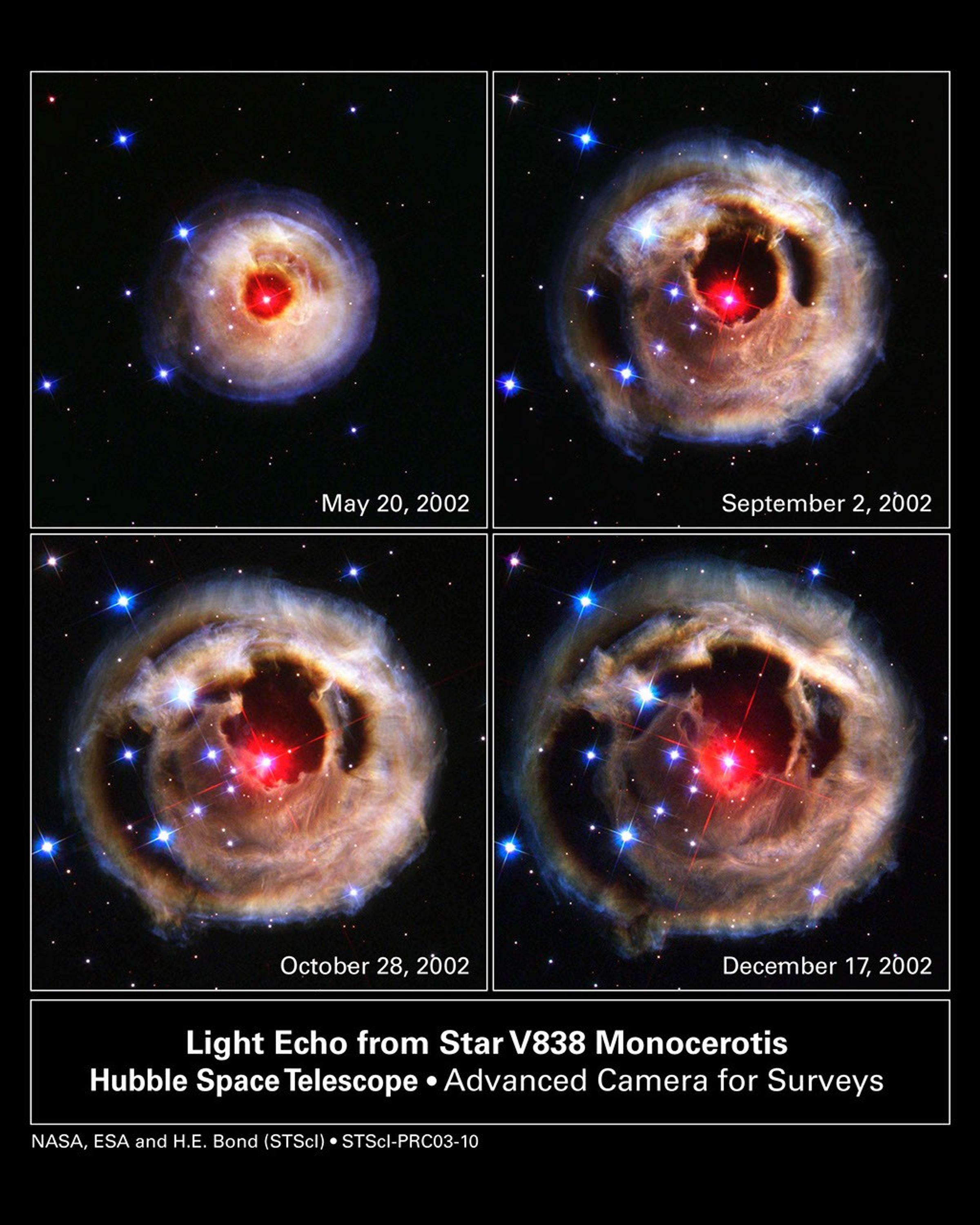
This sequence of pictures from the NASA Hubble Space Telescope's Advanced Camera for Surveys dramatically demonstrates the reverberation of light through space caused by an unusual stellar outburst in January 2002. A burst of light from the bizarre star is spreading into space and reflecting off of surrounding shells of dust to reveal a spectacular, multicolored bull's eye.
This sequence of pictures from May to December 2002 shows apparent changes in the appearance of the circumstellar dust as different parts are illuminated sequentially. This effect is called a "light echo." From the first to last image the apparent diameter of the nebula appears to balloon from 4 to 7 light-years. This gives the illusion that the dust is expanding into space faster than the speed of light. In reality the dust shells are not expanding at all, but it is simply the light from the stellar flash that is sweeping out into the nebula. The different colors in the nebula reflect changes in the color of the star during its outburst.
The red star at the center of the eyeball-like feature is an unusual erupting supergiant called V838 Monocerotis, located about 20,000 light-years away in the winter constellation Monoceros (the Unicorn). During its outburst the star brightened to more than 600,000 times our Sun's luminosity.
The circular feature has now expanded to slightly larger than the angular size of Jupiter on the sky. For several more years it will continue expanding as reflected light arrives from more distant portions of the nebula. Eventually, when light from the back side of the nebula begins to arrive, the light echo will give the illusion of contracting, and finally it will disappear by the end of this decade. The black gaps around the red star are regions of space where there are holes in dust. This shows the nebula has a Swiss-cheese structure.
About the Object
- R.A. PositionR.A. PositionRight ascension – analogous to longitude – is one component of an object's position.07h 04m 05s
- Dec. PositionDec. PositionDeclination – analogous to latitude – is one component of an object's position.–03° 50' 50"
- ConstellationConstellationOne of 88 recognized regions of the celestial sphere in which the object appears.Monoceros
- DistanceDistanceThe physical distance from Earth to the astronomical object. Distances within our solar system are usually measured in Astronomical Units (AU). Distances between stars are usually measured in light-years. Interstellar distances can also be measured in parsecs.The star is ~20,000 light-years (~6 kiloparsecs) away.
- DimensionsDimensionsThe physical size of the object or the apparent angle it subtends on the sky.Each individual image is 82 arcseconds (7.8 light-years or 2.4 parsecs) wide.
About the Data
- Data DescriptionData DescriptionProposal: A description of the observations, their scientific justification, and the links to the data available in the science archive.
Science Team: The astronomers who planned the observations and analyzed the data. "PI" refers to the Principal Investigator. - InstrumentInstrumentThe science instrument used to produce the data.HST>ACS/WFC
- Exposure DatesExposure DatesThe date(s) that the telescope made its observations and the total exposure time.April - December, 2002, Exposure Time: 6.3 hours total over a time span of 8 months
- FiltersFiltersThe camera filters that were used in the science observations.F435W (B), F606W (V), F814W (I)
- Object NameObject NameA name or catalog number that astronomers use to identify an astronomical object.V838 Monocerotis, V838 Mon
- Object DescriptionObject DescriptionThe type of astronomical object.Nova-like object, Light Echo
- Release DateMarch 26, 2003
- Science ReleaseHubble Watches Light from Mysterious Erupting Star Reverberate Through Space
- Credit
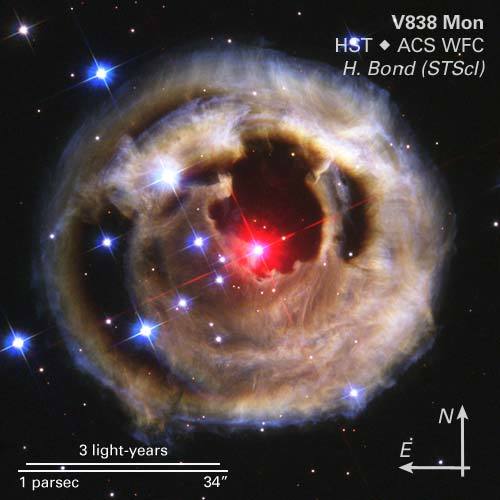
Related Images & Videos
Share
Details
Claire Andreoli
NASA’s Goddard Space Flight Center
Greenbelt, Maryland
claire.andreoli@nasa.gov









